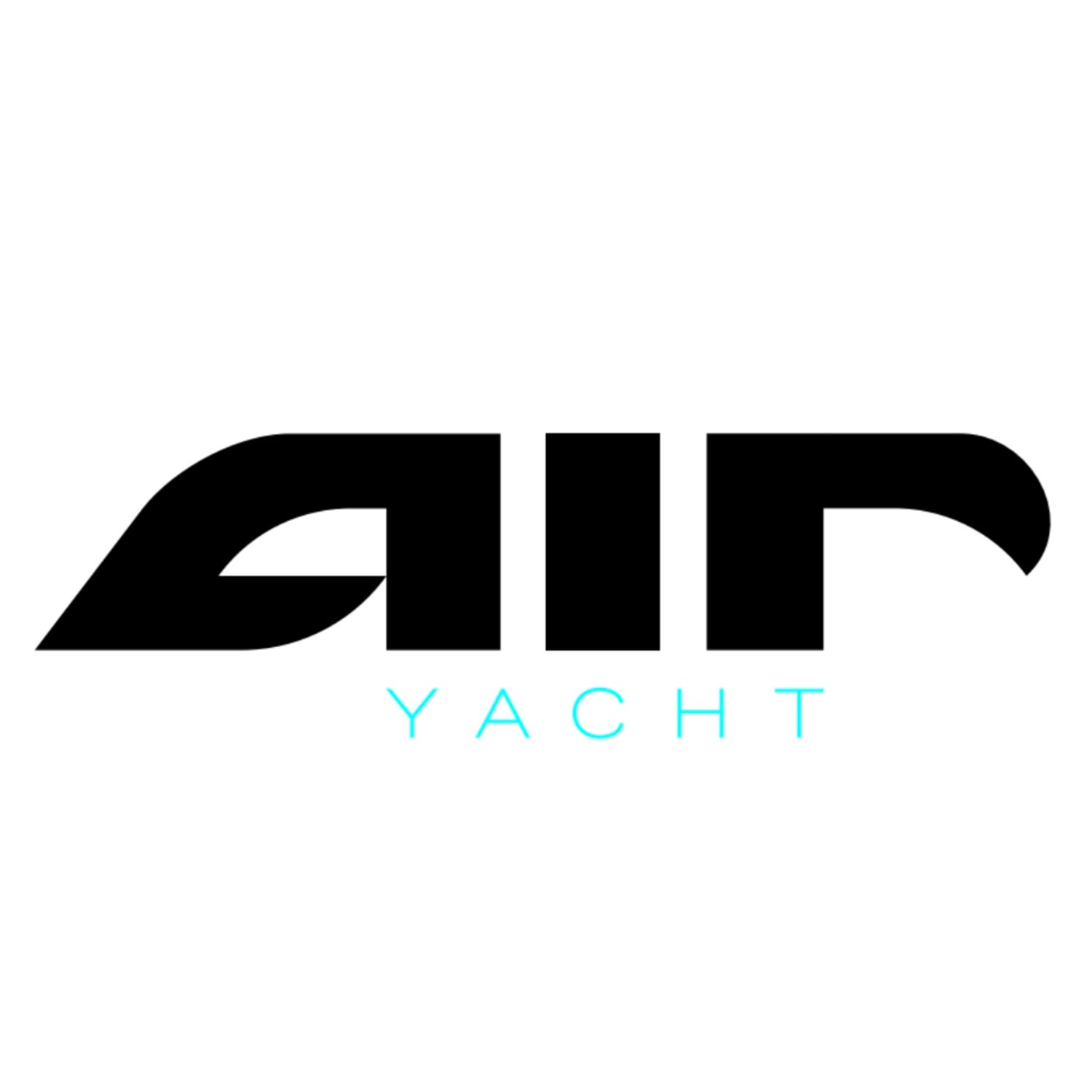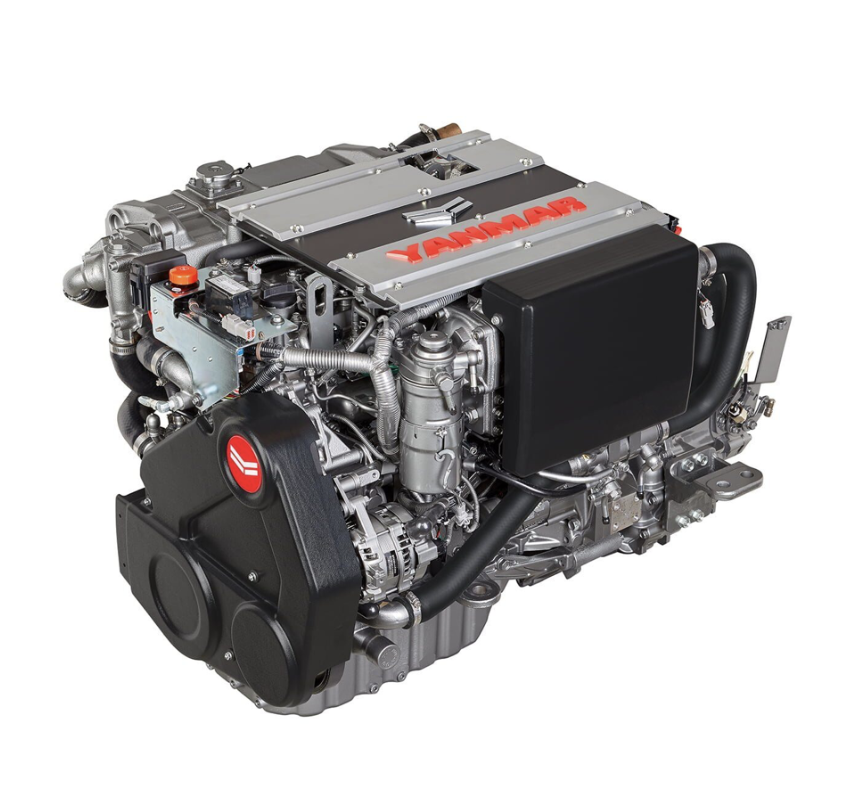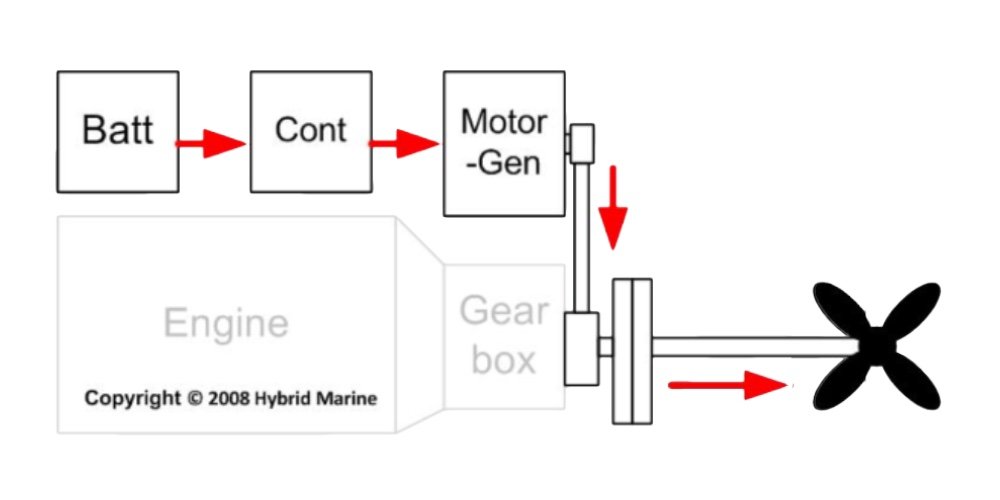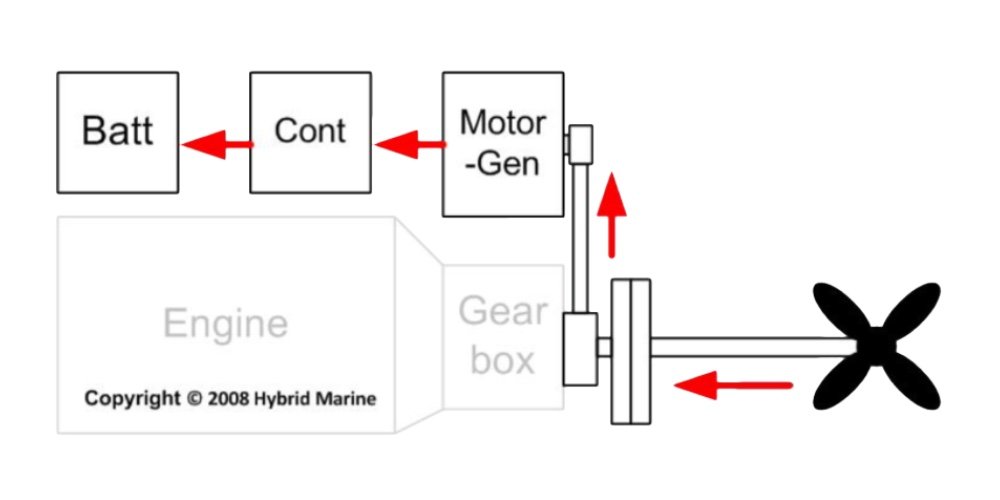Engines
The normal choice of sailors is to use wind as they prefer the peace, quiet and exhilaration of wind propulsion, but the reality is that sailboats need a secondary form of propulsion for many reasons. Historically, this has been provided by diesel engines. Lately, with the introduction of a range of innovative technologies – some old and some new – electric and hydrogen engines have come into the spotlight.
Air Yacht understands the benefits of sailing with wind alone, while also appreciating the necessity of a reliable secondary system and recognising the exciting current innovations. We have incorporated into our design not only leading sailing technology from sailing masters, but also reliable standard diesel engines together with the latest iteration of emerging designs.
Diesel
We use two Yanmar 4LV 150 diesel engines (110kW/150hp), which have a compact design, common rail technology, four-cylinder direct injection with turbochargers and inter-cooling.
There is an engine in each engine bay, with all readings – oil, temperature monitors, etc. – running through the NMEA 2000 backbone and displayed at the chart plotter.
Hybrid Marine System
In the automotive world, hybrid engines are sold mainly on their ability to save fuel. For a marine vessel, hybrids have many more advantages:
In the right application, a considerable amount of fuel can be saved.
Marine craft have an increasing demand for kWs of electrical power. This can be provided by a hybrid engine, in a very compact space, at low cost. The functions of a propulsion engine and a separate generator can be combined in one unit.
Periods of whisper-quiet propulsion with no noise or pollution are ideal for entry and exit to sensitive areas (marinas, nature reserves, mother ships, etc.).
Enhanced slow-speed manoeuvring. Very slow propeller speed is possible with rapid acceleration. Large amount of power for electrical bow/stern thrusters.
Redundancy: if you have dirty fuel or the engine/gearbox fails, you can use electric drive to get you out of trouble. If the hybrid engine or batteries fail, you still have conventional propulsion via engine and gearbox.
Greater engine efficiency means fewer greenhouse gases. Regeneration under sail can reduce/eliminate use of a generator. Solar, wind and mains power can contribute to overall power budget.
The 5 different operating modes of the hybrid
Mode 1 – Engine drive
Conventional propulsion with hybrid completely disabled. Engine is able to drive through the gearbox to the shaft. Does not require any hybrid components to enable propulsion.
Mode 2 – Electric drive
Engine is off and motor is driving the propeller with energy from the battery bank.
Mode 3 – Engine drive & electrical generation
The engine is driving the propeller shaft, via the gearbox, in the conventional way. At the same time the generator is engaged and providing an extra load on the engine. Energy is extracted and stored in the battery bank.
The controller is able to provide multi-region charging of the battery bank (this is patented technology) and can accommodate any battery technology. At higher engine speeds, when the propeller starts to substantially load the engine, the hybrid generator backs off so as not to overload the engine. At very high loads, the hybrid generator turns off completely allowing the engine to supply its full power to the propeller.
Mode 4 – Stand-alone generator
The shaft clutch is open and the propeller disconnected.
The engine and hybrid generator can now operate in stand-alone mode. Useful if at anchor or in harbour and the generator is required. In some cases (inland barges), it is better to achieve stand-alone operation with a boost alternator bank. This can run with the gearbox in neutral and will boost hybrid generation when underway and at low engine speeds.
Mode 5 – Regeneration
Applicable only to sailing craft. When under canvas the propeller can be allowed to freewheel. The controller can then have the generator extract energy from the spinning propeller to provide charge back to the battery bank.
Images used with permission of and thanks to Hybrid MarineRegeneration
For a sailing boat, you can freewheel the propeller when under canvas. It is then possible to recuperate energy from the propeller with careful control in the hybrid. Most propellers are not designed to optimise regeneration and are not particularly efficient here. However, a useful amount of energy can be generated from a standard prop.
The chart below shows typical power that can be regenerated under sail. As you can see, although the power levels are low on an extended passage, useful amounts of energy can be obtained and stored in the battery for future use on board.
Extra drag is incurred (you don’t get something for nothing), but if passage making in the trades, you will be up at hull speed and will notice little difference. If minimising drag is essential, then regeneration can be disabled.
Generator/Generation
This hybrid can now take the place of an on-board generator, the benefits being:
Saving of approximately 400kg in weight – always welcome on a catamaran.
Saving of servicing and costs applicable to another engine.
Having two effective generator apparatuses on board, thereby having a built-in redundancy factor.








